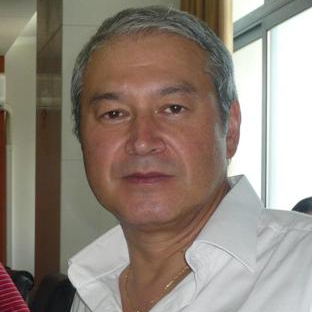Bioactive Molecules in SARS-CoV-2 Infection and Covid-19
A special issue of Molecules (ISSN 1420-3049). This special issue belongs to the section "Medicinal Chemistry".
Deadline for manuscript submissions: closed (31 May 2022) | Viewed by 44029
Special Issue Editors
Interests: antimicrobial peptides; antibacterial; antibiotics; structure-activity relationships; bacteriocins; drug design; peptide engineering
Special Issues, Collections and Topics in MDPI journals
Interests: virus-host interactions; lipid rafts; gangliosides; virus receptors; RNA viruses; SARS-CoV-2 variants; antivirals; vaccines
Special Issues, Collections and Topics in MDPI journals
Special Issue Information
Dear Colleagues,
In this period of SARS-CoV-2 infection (and its variants) responsible for COVID-19, worldwide scientific research on coronaviruses has never been more crucial. This Special Issue of Molecules, titled ‘Bioactive Molecules in SARS-CoV-2 Infection and COVID-19’ is focused on the diverse viral and/or host molecules impacting SARS-CoV-2 and associated COVID-19 diseases. All the works dealing with detection, prevention (vaccination), and the various approaches (i.e., chemotherapeutic drugs and antibodies) to the potential treatment of coronavirus infections will be considered, with the aim to compile some key structural and functional information on SARS-CoV-2 and COVID-19. Studies on the genetic diversity of SARS-CoV-2 and its (human/animal) hosts to better understand virus transmission and distribution, viral disease progression, virus–cell interactions, molecular mechanisms, immunological aspects including ADE (antibody-dependent enhancement) and ERD (enhancement of respiratory diseases), therapy and/or vaccine efficacies, etc. are strongly invited. As guest editors, we do believe that this Special Issue will be a useful tool to virologists or researchers in the field, as well as to clinicians confronted with a growing number of patients suffering from COVID-19.
Potential contributors in the field are thus strongly encouraged to submit their work to this Special Issue. Review articles are also welcome.
Dr. Jean-Marc Sabatier
Prof. Dr. Jacques Fantini
Guest Editors
Manuscript Submission Information
Manuscripts should be submitted online at www.mdpi.com by registering and logging in to this website. Once you are registered, click here to go to the submission form. Manuscripts can be submitted until the deadline. All submissions that pass pre-check are peer-reviewed. Accepted papers will be published continuously in the journal (as soon as accepted) and will be listed together on the special issue website. Research articles, review articles as well as short communications are invited. For planned papers, a title and short abstract (about 100 words) can be sent to the Editorial Office for announcement on this website.
Submitted manuscripts should not have been published previously, nor be under consideration for publication elsewhere (except conference proceedings papers). All manuscripts are thoroughly refereed through a single-blind peer-review process. A guide for authors and other relevant information for submission of manuscripts is available on the Instructions for Authors page. Molecules is an international peer-reviewed open access semimonthly journal published by MDPI.
Please visit the Instructions for Authors page before submitting a manuscript. The Article Processing Charge (APC) for publication in this open access journal is 2700 CHF (Swiss Francs). Submitted papers should be well formatted and use good English. Authors may use MDPI's English editing service prior to publication or during author revisions.
Keywords
- SARS-CoV-2
- COVID-19
- renin–angiotensin system
- angiotensin-2
- auto-immunity
- cytokine storm
- ADE
- ERD
- ACE2 receptor
- AT1 receptor (AT1R)
- gangliosides
- lipid rafts







